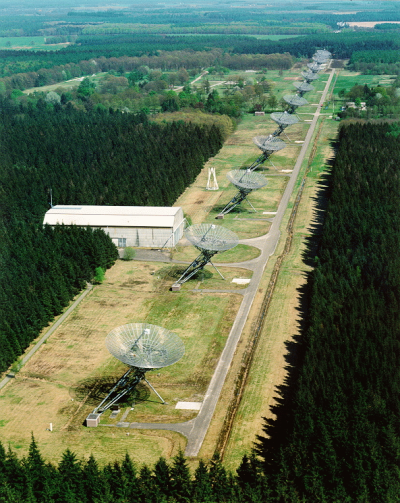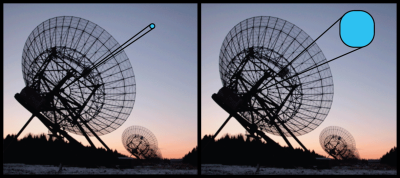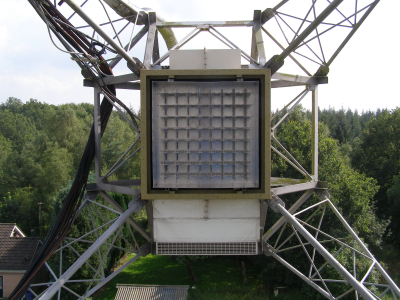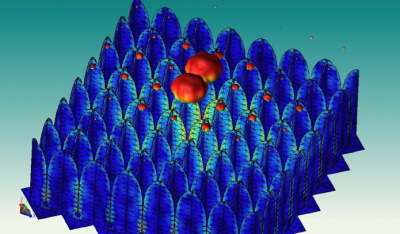The Netherlands Organisation for Scientific Research (NWO), in the context of its Large Grants programme, has awarded a grant of nearly 2.5 million euros to astronomers of The Netherlands Institute of Radio Astronomy (ASTRON) and the Kapteyn Astronomical Institute of the University of Groningen. This funding enables the implementation of an important improvement of the Westerbork Synthesis Radio Telescope (WSRT), allowing this facility to remain one of the worldʼs most advanced radio telescopes. The APERTIF project concerns the replacement of the current radio antennas, a single antenna in each of the 14 dishes of the WSRT, by an array of more than 100 coupled antennas near the focal point of each dish. This revolutionary ʻradio cameraʼ widens the existing field-of-view of the WSRT, currently similar to the size of the full moon, by more than a factor 30. Such an expansion of its field-of-view allows astronomers to study galaxies, pulsars and magnetic fields in the universe, in a new and unprecedented manner. The required technological developments for this advanced antenna system has been funded by previous grants from NWO and the European Union. The present grant from NWO is instrumental for the successful scientific commissioning and exploitation of this technology for the WSRT.
ASTRON, in collaboration with the Dutch universities and the Kapteyn Astronomical Institute in particular, has a strong tradition in developing and implementing new technologies for radio astronomy, and is recognized internationally to play a leading role in this area. The technological research and development is focused on the implementation of so-called ʻAntenna Arrayʼ technology, superseding the classic idea of dishes, each with a single antenna. By employing ʻAntenna Arrayʼ technology for radio telescopes, it becomes possible to observe larger areas of the sky much faster. This new technology can be applied in several ways. The functionality of the revolutionary LOFAR telescope, to be inaugurated by Her Majesty Queen Beatrix on June 12, is also based on this technology. The successful development of ʻAntenna Arrayʼ technology enables ASTRON and the Dutch astronomical community to play an important role in the definition and construction of the Square Kilometre Array (SKA). The SKA is the next generation radio telescope, 100 times more sensitive than the WSRT or LOFAR, and will be constructed by an international consortium of institutes and universities in which The Netherlands will play a leading role.
In 2010, the WSRT celebrates 40 years of scientific productivity. By means of constant improvements and upgrades over its lifetime, the WSRT has remained a world-class facility for astronomers around the world. The most recent upgrade was implemented some 10 ago and with the upcoming implementation of APERTIF on the WSRT, this Dutch radio telescope continues to play its prominent role for many years to come.
Contact
Dr. Tom Oosterloo
senior astronomer
Netherlands Institute for Radio Astronomy (ASTRON)
Oude Hoogeveensedijk 4
7991 PD Dwingeloo
The Netherlands
http://www.astron.nl
Tel. : (+31)-(0)521-595100
Email: oosterloo astron.nl
Prof.dr. Marc Verheijen
University of Groningen
Kapteyn Astronomical Institute
Landleven 12
9747 AD Groningen
The Netherlands
http://www.astro.rug.nl
Tel. : (+31)-(0)50-3634073
Email: verheyen astro.rug.nl




